Hybrid electric vehicles are a new generation of new energy vehicles powered by both traditional internal combustion engines and electric motors, with the advantages of low emissions, low fuel consumption, and high power output. Based on the power ratio of the electric motor to the traditional internal combustion engine, they can be divided into strong hybrid, medium hybrid, and weak hybrid.
The following is the full report:
As a type of mHEV (mild hybrid electric vehicle) with weak hybrid technology, the 48V BRS (Boost recuperation system) system will be the most cost-effective new energy vehicle technology solution in the next decade. Compared with traditional internal combustion engine vehicles, the 48V BRS system mainly adds three core components: 48V boost recovery motor (BRM), 48V/12V DC power converter (PCU, Power Conversion Unit) and 48V lithium battery. It has functions such as start-stop, energy recovery, acceleration assistance, and electric creeping. Traditional internal combustion engine vehicles equipped with the first-generation 48V system (the motor is integrated with the engine through a pulley) have a fuel saving rate of 8~12%, and those equipped with the second-generation 48V system (the motor is integrated with the gearbox) are expected to save 12~19%.
1. The origin of 48 volts
1) What is 48 volts?
48V refers to the rated DC voltage of the system, which is not always stable at 48V; according to the LV148 definition, it is shown in the following figure:
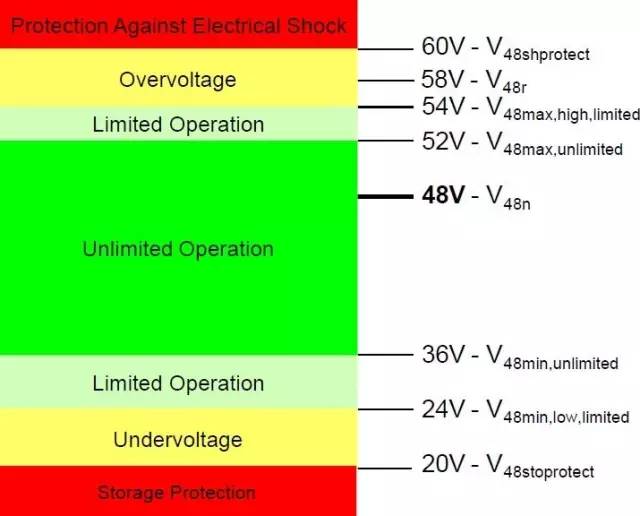
The voltage of a 48V battery will change with the SOC (remaining battery capacity). For example, when the SOC of the battery changes from 10% to 100% at normal temperature, the open circuit voltage is 32.5V to 49.8V.
The assist and energy recovery modes of the BRM motor will also cause the 48V voltage to rise or fall. When the battery SOC is high, the voltage required to charge the battery is often higher than 50V;
DC voltage is not a straight line, but fluctuates. Regarding the permissible fluctuation of DC voltage, European regulations stipulate that the effective value of the fluctuation part (i.e. the equivalent value after removing the mean value) must be less than 10% of the voltage mean value to be considered as DC voltage.
2) Why 48V?
60V is a safe voltage. According to the 10% margin mentioned above, the maximum voltage allowed for the system to operate is 54V. Considering the battery's own voltage change and energy recovery mode mentioned in 1), which will increase the voltage, leaving a certain margin will make it 48V.
There may also be some historical reasons for the origin of the name 48V.
2. Introduction to 48V Key Components The typical connection diagram of the 48V BRS electrical network is as follows. In addition to the main components such as the BRM motor, DC converter, and 48V battery, 48V electrical load concept products are also common on the market, such as 48V electric superchargers, 48V electric heating catalysts, etc., which also play a positive role in the functional expansion and promotion of the 48V system.

1) Power-assisted recovery motor (BRM) A typical power-assisted recovery motor is shown in the figure below. It can be used to generate electricity, assist in providing forward propulsion for the vehicle, and even quickly start the engine when driven by a 48-volt power battery pack. BRM generally uses a claw-pole motor to replace the traditional 14-volt generator in the car. 2) Power conversion unit (PCU) A typical power conversion unit is shown in the figure below. The bidirectional DC/DC converter connects the high-voltage network (<60V) and the 12-volt network in the 48V power-assisted recovery system. Energy can be transmitted from the high-voltage network to the low-voltage network to power the 14-volt network; it can also be transmitted from the low-voltage network to the high-voltage network to power the BRM for starting, assisting, and recovering.
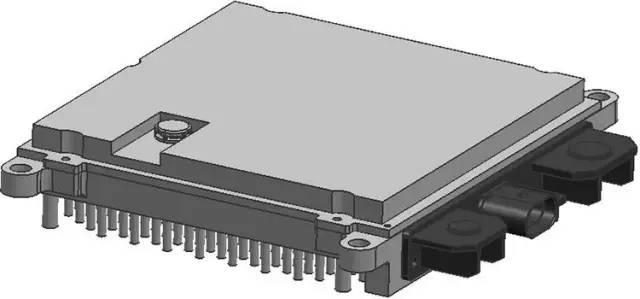
3) Power battery (48V battery) A typical 48V lithium battery is shown in the figure below. It is mainly used to provide 48V voltage for BRM, store energy through braking energy recovery, and provide energy for the 12-volt electrical network under certain circumstances. 3. Benefits of 48-volt system In recent years, environmental pollution has intensified and smog has been rampant. The national and local governments are in urgent need of reducing motor vehicle emissions and improving ambient air quality. The emergence of the national fourth-stage enterprise average fuel consumption requirements and the Beijing VI draft regulations will promote the large-scale popularization of 48V BRS system business. The basic functions of the 48V system are shown in the figure below. The following article introduces the four main functions of the first-generation 48V system technology: coasting start-stop, energy recovery, motor assist and electric creeping (pure electric drive).
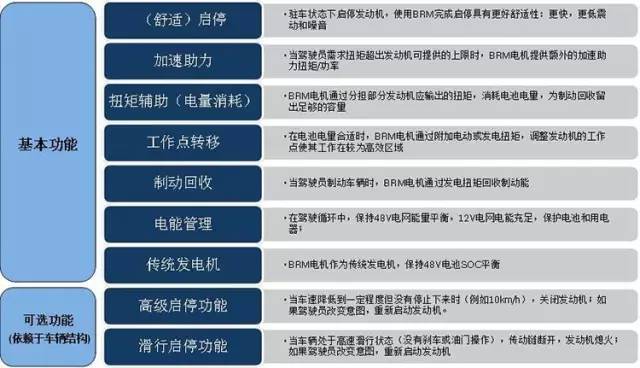
1) Coasting start-stop When the vehicle is coasting (relax the accelerator pedal or brake pedal), the engine power is cut off to shut down the engine and disconnect the transmission system, which can save fuel and increase the vehicle's coasting distance. When the vehicle speed is low or the brakes are applied, the BRM can be used to quickly start the engine and recover energy.
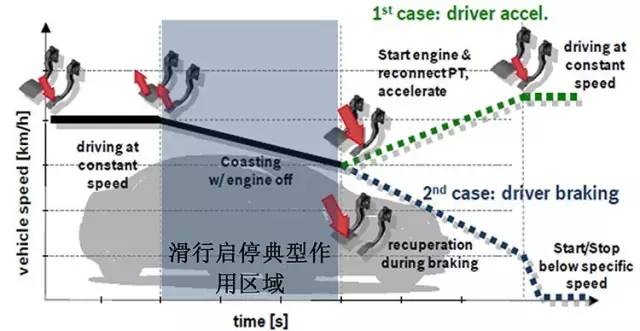
2) Energy recovery When the driver brakes the vehicle, the BRM stores energy by recovering braking energy through generating torque.
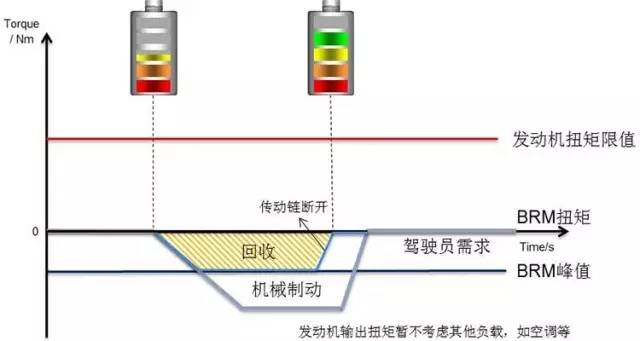
3) Motor Assist When the driver's required torque exceeds the upper limit of the torque that the current engine can provide, the BRM motor provides additional torque/power for acceleration assistance. Boost, that is, acceleration assistance mode, can improve the vehicle's acceleration performance, especially turbocharged engines, and compensate for insufficient engine torque when the engine speed is low.
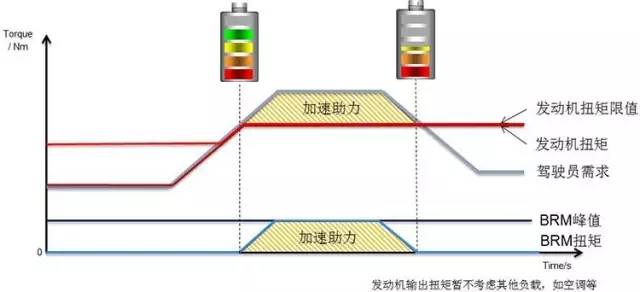
4) Electric creeping Electric creeping means that the power is only provided by the motor when the vehicle is running at low speed, and the engine is not started. It can reduce vehicle emissions on crowded urban roads. At present, many domestic OEMs are developing hybrid vehicles equipped with 48V systems, which have been launched in 2017. This low-cost energy-saving and emission-reduction system has gradually entered everyone's life!
Previous article:Analysis of simulation design scheme for automobile chassis system development
Next article:Brief analysis of the development stages of the intelligent driving EPB system
- Popular Resources
- Popular amplifiers
-
 Multimodal perception parameterized decision making for autonomous driving
Multimodal perception parameterized decision making for autonomous driving -
 Operating Systems: Essentials and Design Principles 8th Edition (Stallings)
Operating Systems: Essentials and Design Principles 8th Edition (Stallings) -
 singlechip-implementation-of-levelcrossing-adc-for-ecg-sampling-2332-0796-1000219
singlechip-implementation-of-levelcrossing-adc-for-ecg-sampling-2332-0796-1000219 -
 Impact of Power Density Maximization on Efficiency of DC–DC Converter Systems
Impact of Power Density Maximization on Efficiency of DC–DC Converter Systems
- Huawei's Strategic Department Director Gai Gang: The cumulative installed base of open source Euler operating system exceeds 10 million sets
- Analysis of the application of several common contact parts in high-voltage connectors of new energy vehicles
- Wiring harness durability test and contact voltage drop test method
- Sn-doped CuO nanostructure-based ethanol gas sensor for real-time drunk driving detection in vehicles
- Design considerations for automotive battery wiring harness
- Do you know all the various motors commonly used in automotive electronics?
- What are the functions of the Internet of Vehicles? What are the uses and benefits of the Internet of Vehicles?
- Power Inverter - A critical safety system for electric vehicles
- Analysis of the information security mechanism of AUTOSAR, the automotive embedded software framework
 Professor at Beihang University, dedicated to promoting microcontrollers and embedded systems for over 20 years.
Professor at Beihang University, dedicated to promoting microcontrollers and embedded systems for over 20 years.
- Innolux's intelligent steer-by-wire solution makes cars smarter and safer
- 8051 MCU - Parity Check
- How to efficiently balance the sensitivity of tactile sensing interfaces
- What should I do if the servo motor shakes? What causes the servo motor to shake quickly?
- 【Brushless Motor】Analysis of three-phase BLDC motor and sharing of two popular development boards
- Midea Industrial Technology's subsidiaries Clou Electronics and Hekang New Energy jointly appeared at the Munich Battery Energy Storage Exhibition and Solar Energy Exhibition
- Guoxin Sichen | Application of ferroelectric memory PB85RS2MC in power battery management, with a capacity of 2M
- Analysis of common faults of frequency converter
- In a head-on competition with Qualcomm, what kind of cockpit products has Intel come up with?
- Dalian Rongke's all-vanadium liquid flow battery energy storage equipment industrialization project has entered the sprint stage before production
- Allegro MicroSystems Introduces Advanced Magnetic and Inductive Position Sensing Solutions at Electronica 2024
- Car key in the left hand, liveness detection radar in the right hand, UWB is imperative for cars!
- After a decade of rapid development, domestic CIS has entered the market
- Aegis Dagger Battery + Thor EM-i Super Hybrid, Geely New Energy has thrown out two "king bombs"
- A brief discussion on functional safety - fault, error, and failure
- In the smart car 2.0 cycle, these core industry chains are facing major opportunities!
- The United States and Japan are developing new batteries. CATL faces challenges? How should China's new energy battery industry respond?
- Murata launches high-precision 6-axis inertial sensor for automobiles
- Ford patents pre-charge alarm to help save costs and respond to emergencies
- New real-time microcontroller system from Texas Instruments enables smarter processing in automotive and industrial applications
- 【RT-Thread Reading Notes】3. RT-Thread Study Chapter 4-5 Reading Notes
- TI DSP 6000 Series Optimization Experience
- HTTP protocol request and data capture
- March
- Use of hardware multiplier in MSP430 library
- UPD78F0888A Renesas MCU peripheral settings
- Review summary: Kanzhi K510 CRB-KIT development kit
- Dear masters, does anyone have the interface dimensions of the LC RF coaxial connector? I need it urgently. Thank you!
- ST Motor_by Changjianze1
- 【ST NUCLEO-H743ZI Review】 + LIS25BA Data Collection

 Multimodal perception parameterized decision making for autonomous driving
Multimodal perception parameterized decision making for autonomous driving
















 京公网安备 11010802033920号
京公网安备 11010802033920号